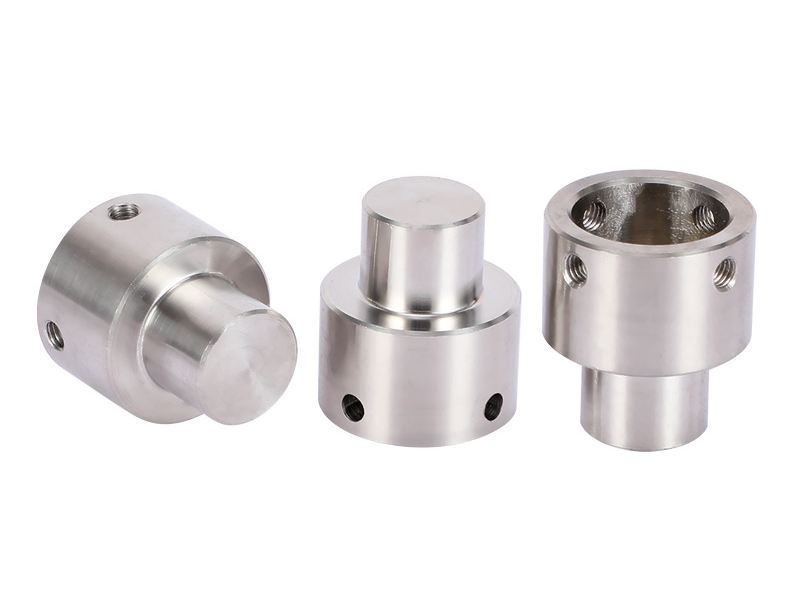CNC Turning of Titanium Alloys for High-Performance Aerospace Applications
Introduction
The aerospace and aviation industry demands components that exhibit exceptional performance under extreme environmental and mechanical stresses. Titanium alloys, known for their excellent strength-to-weight ratio, corrosion resistance, thermal stability, and fatigue resistance, have become indispensable in manufacturing critical aerospace components such as turbine blades, fasteners, landing gear components, and structural fittings.
Advanced CNC turning services provide unparalleled precision and consistency for titanium aerospace parts. CNC turning ensures high dimensional accuracy, superior surface finishes, and the ability to produce complex geometries essential for high-performance aerospace systems.
Titanium Alloy Materials
Material Performance Comparison
Titanium Alloy | Tensile Strength (MPa) | Yield Strength (MPa) | Max Operating Temp (°C) | Typical Applications | Advantage |
|---|---|---|---|---|---|
900-1100 | 830-910 | 400-450 | Turbine components, structural fittings | Excellent strength, fatigue resistance | |
1200-1300 | 1100-1200 | 350-400 | Landing gear, fasteners | High strength, superior toughness | |
950-1200 | 880-950 | 500-550 | Jet engine parts, turbine blades | Excellent creep resistance, thermal stability | |
860-950 | 795-870 | 350-400 | Critical brackets, medical/aerospace combined uses | Enhanced ductility, fracture toughness |
Material Selection Strategy
Selecting the ideal titanium alloy for aerospace components relies heavily on performance requirements:
For structural fittings and turbine parts needing fatigue resistance: Ti-6Al-4V (TC4) offers exceptional strength-to-weight characteristics.
For components experiencing high mechanical loads, such as landing gear, Ti-10V-2Fe-3Al (Grade 19) delivers superior strength and toughness.
High-temperature engine parts and turbine blades: Ti-6Al-2Sn-4Zr-2Mo (Grade 4) provides outstanding creep resistance and thermal stability.
Critical components needing high fracture toughness and reliability: Ti-6Al-4V ELI (Grade 23) is preferred due to its excellent ductility.
CNC Turning Processes
Process Performance Comparison
CNC Turning Technology | Dimensional Accuracy (mm) | Surface Roughness (Ra μm) | Typical Applications | Key Advantages |
|---|---|---|---|---|
±0.005-0.015 | 0.4-0.8 | Engine components, aerospace fasteners | High precision, consistent surface finish | |
±0.005-0.02 | 0.6-1.2 | Complex aerospace components, landing gear parts | Effective for intricate geometries, fewer setups | |
±0.01 | 0.8-1.6 | General structural fittings, brackets | Specialized tooling, optimized for titanium alloys | |
±0.002-0.01 | 0.2-0.4 | Precision blades, critical sealing surfaces | Exceptional surface finish, superior accuracy |
Process Selection Strategy
Optimal CNC turning technology selection depends on the specific aerospace component requirements:
High-precision engine parts and critical fasteners: Precision CNC Turning ensures dimensional accuracy and consistent quality.
Complex structural components or landing gear assemblies: Multi-Axis CNC Turning efficiently handles intricate geometries and reduces setup times.
Standard aerospace fittings and structural components: Titanium CNC Machining offers optimized titanium processing capabilities.
Precision blades or components demanding ultra-fine surfaces: CNC Grinding Service provides precise surface control and tight tolerances.
Surface Treatment
Surface Treatment Performance
Treatment Method | Corrosion Resistance | Wear Resistance | Temperature Stability (°C) | Typical Applications | Key Features |
|---|---|---|---|---|---|
Excellent (≥500 hrs ASTM B117) | Moderate-High | Up to 400 | Structural brackets, exterior components | Enhanced corrosion resistance, durable finish | |
Superior (≥800 hrs ASTM B117) | Moderate | Up to 300 | Precision engine components, blades | Ultra-smooth surfaces, improved fatigue performance | |
Superior (≥1000 hrs ASTM B117) | High (HV2000-3000) | Up to 600 | High-wear parts, landing gear components | Superior hardness, wear protection | |
Excellent (≥600 hrs ASTM B117) | Moderate | Up to 350 | General aerospace fittings | Surface cleanliness, corrosion protection |
Surface Treatment Selection
Surface treatments enhance aerospace titanium components based on operational and environmental demands:
Structural aerospace components requiring robust corrosion protection: Anodizing provides excellent protection and durability.
Precision turbine and engine parts needing exceptional surface quality: Electropolishing ensures superior smoothness and fatigue resistance.
Components subjected to intense wear or friction: PVD Coating significantly enhances surface hardness and durability.
General aerospace fittings and components: Passivation ensures a clean, corrosion-resistant surface.
Quality Control
Quality Control Procedures
Detailed dimensional inspections utilizing Coordinate Measuring Machines (CMM) and optical measurement systems.
Surface roughness evaluation via precise profilometry equipment.
Mechanical testing for tensile strength, yield strength, and fatigue properties following aerospace industry standards (ASTM, ISO).
Non-destructive testing (NDT), including ultrasonic (UT), radiographic (RT), and eddy current inspections, to ensure structural integrity.
Corrosion resistance testing through standardized salt spray testing (ASTM B117).
Complete documentation and traceability compliance to aerospace standards (AS9100, ISO 9001), ensuring regulatory adherence.
Industry Applications
CNC-Turned Titanium Applications
Precision turbine blades and engine components.
Critical structural fittings, fasteners, and brackets.
High-performance landing gear components.
Aerospace components demand lightweight construction and durability.
Related FAQs:
Why are titanium alloys favored for high-performance aerospace applications?
How does CNC turning enhance precision in aerospace titanium components?
Which titanium alloy is most suitable for turbine blades and engine parts?
What surface treatments improve the durability of CNC-turned titanium aerospace components?
What aerospace quality standards are critical for CNC-turned titanium parts?

